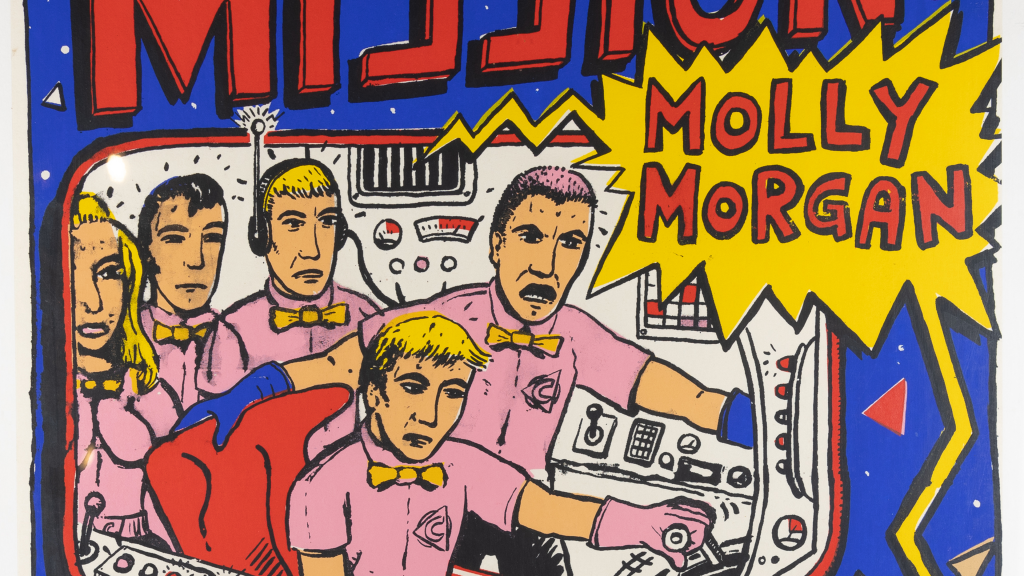
When twice-transported English convict Mary ‘Molly’ Morgan (1760-1835) stepped off the ship to serve a colonial sentence at Newcastle in 1814, little did she know that about 170 years later she would become the central character of a musical stage play. What would she have thought of the band’s electric guitars, saxophone and drumkit (not […]
Read More…
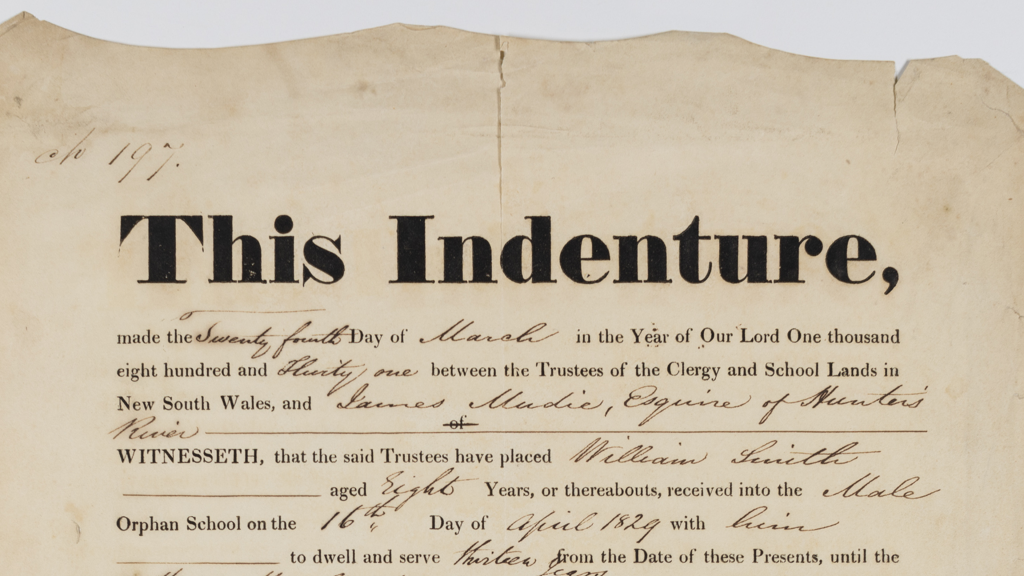
In an office at the Male Orphan School in Liverpool (now Bonnyrigg), on 24 March 1831, a clerk laid a freshly printed form on his desk and, with his pen and ink, filled in the blanks. Somewhere in the rooms of the school that day was an eight year old boy named William Smith. He […]
Read More…
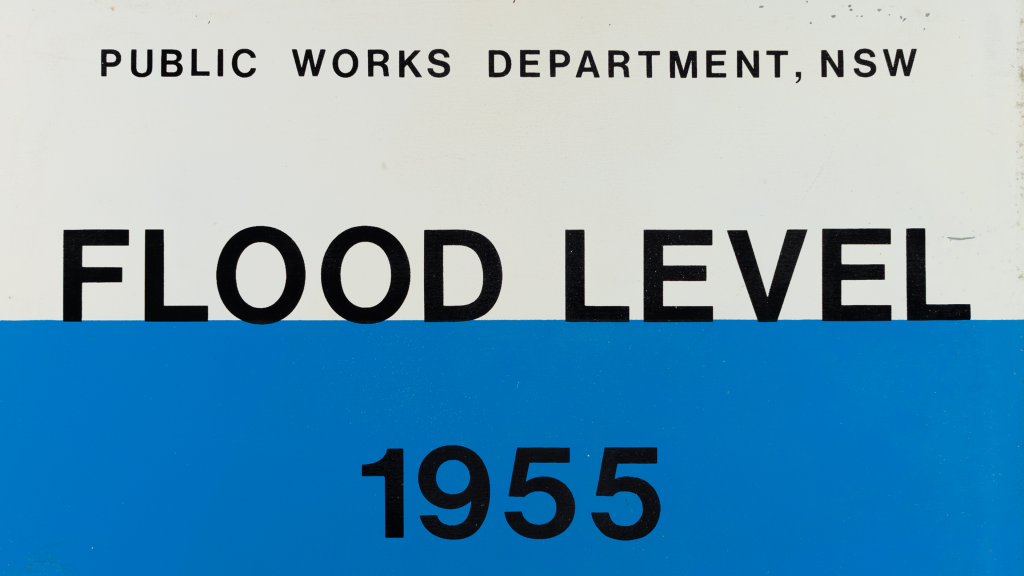
As scientists forecast increasingly erratic weather events and debate ways to effectively reduce the impacts of climate change, it is equally important to look back and learn how communities in the past have dealt with catastrophic weather events such as floods. This flood level marker from Maitland, made in 1982 for installation on electricity poles […]
Read More…
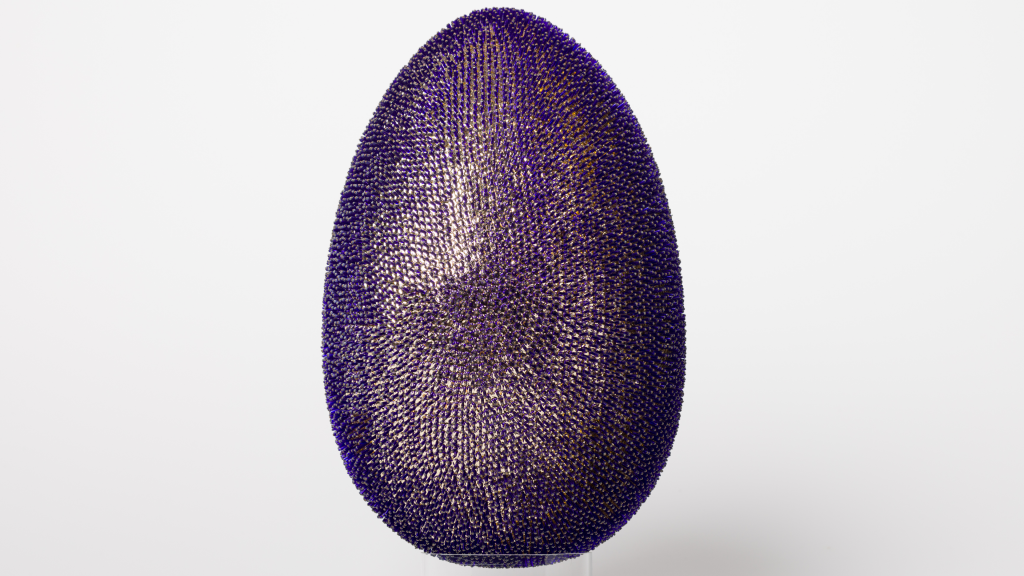
An egg is indeed a treasure, especially when it shimmers with a thousand points of light as it does in Nell’s (1975-) mixed media work, Treasure (2003). Nell, an artist known only by her first name, works across a range of mediums encompassing painting, installation, ceramics and performance. Treasure is an object that embodies her […]
Read More…
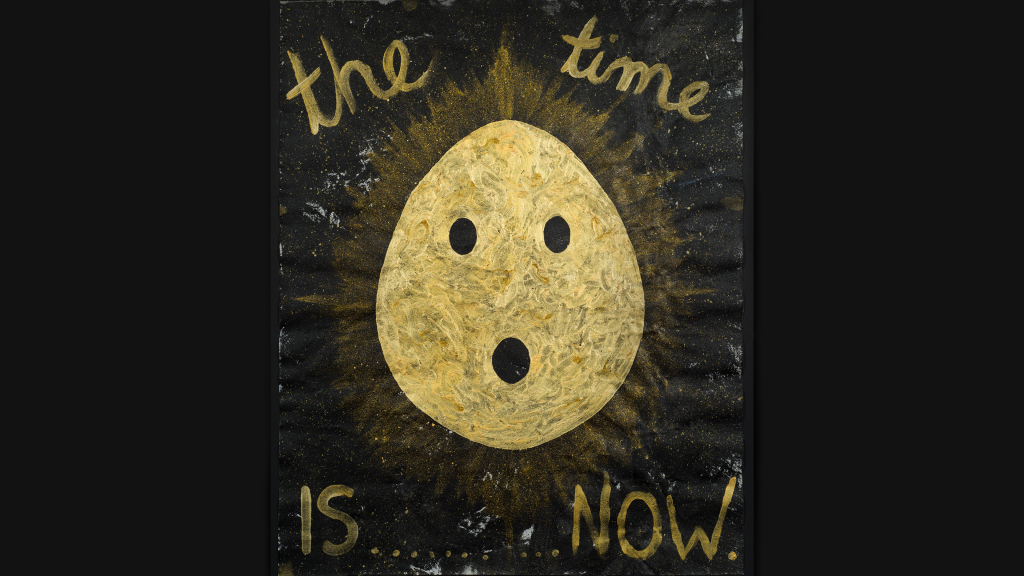
The time is now, declares Nell’s painting. Time to awaken to the present moment, time to awaken to enlightenment. Nell (1975-), an artist who is known only by her first name, invokes the spiritual traditions of Buddhism in her multi-disciplinary works. She works across immersive installations, paintings, ceramics, mosaics, neon light works and music videos […]
Read More…
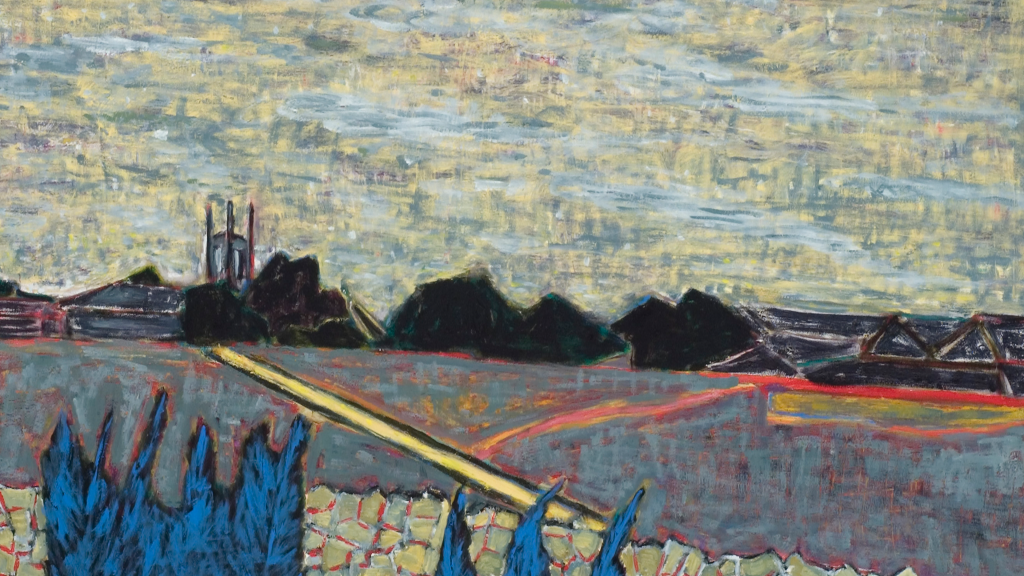
Suzanne Archer (1945-) has been painting the Australian landscape since she arrived here from England in 1965. She won the Wynne Prize in 1994 for her work Waratahs – Wedderburn. Her large, abstract works interpret country through collaged and layered elements that retain some aspects of figuration, such as the trees and horizon lines in […]
Read More…
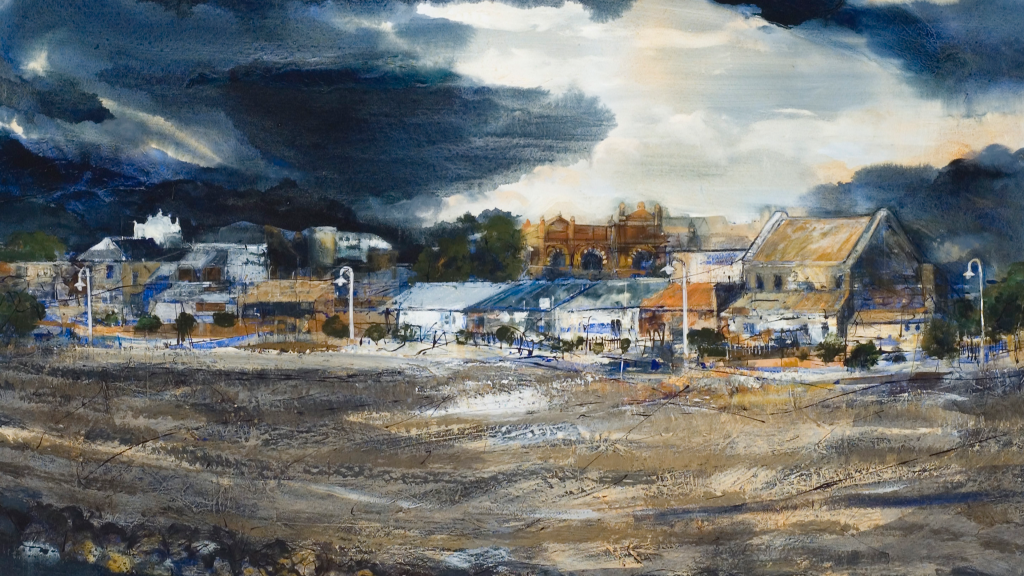
Judith White’s (1951-) view of the Hunter River at Maitland is painted in a most appropriate medium – watercolour. White has used the transparent washes of paint to suggest the smoothly gliding waters of the river and its reflection of the stormy sky above. The massing, dense clouds threaten to burst at any minute with […]
Read More…
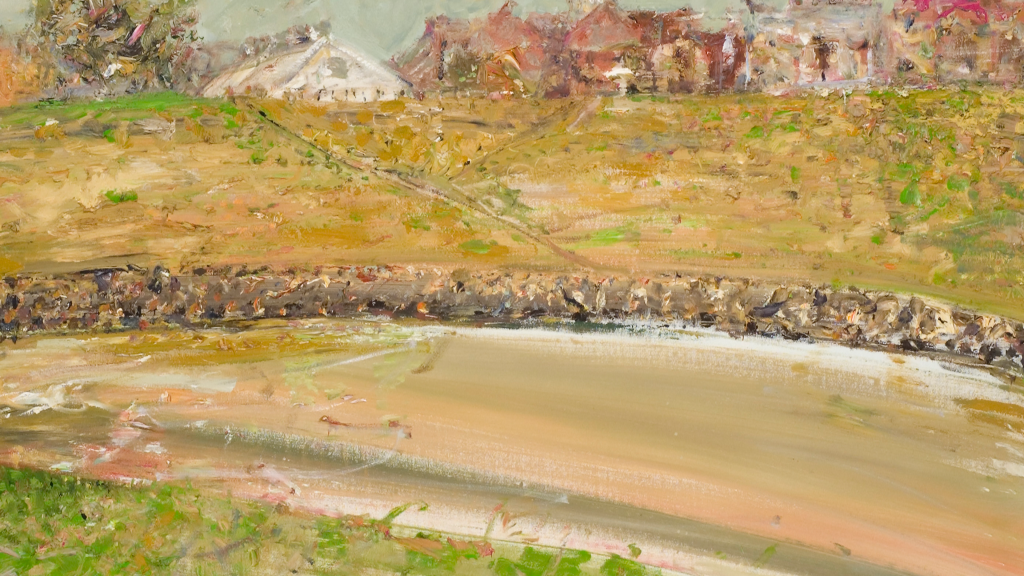
In On the bank John R Walker paints the banks of the Hunter River at Maitland. The rooftops and spires of the city fill the top quarter of the canvas while the expanse of the river dominates the painting’s middle section, painted in swipes of earthy olive to convey the muddy water and its reflection […]
Read More…
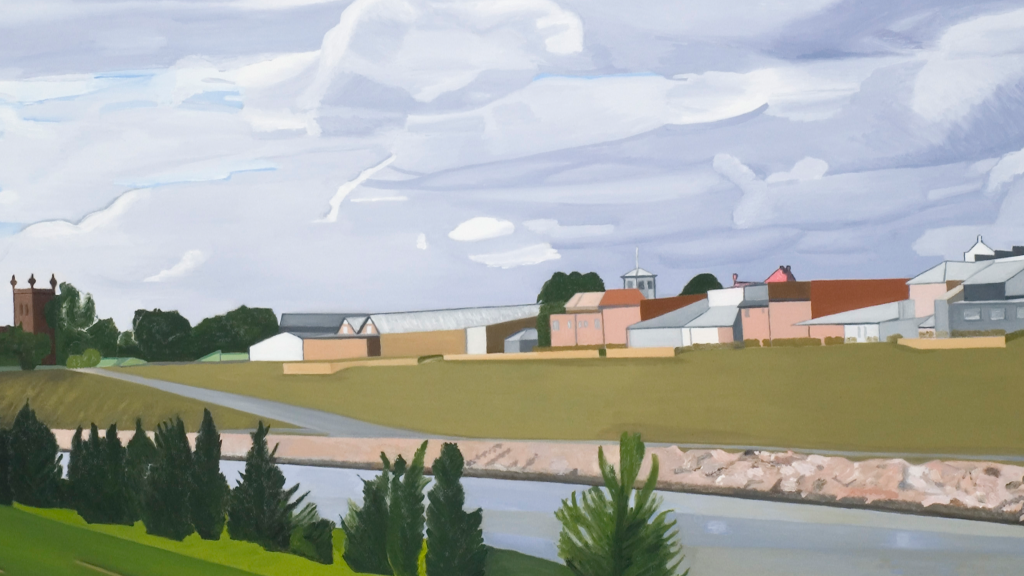
In high-keyed colour and with a light touch, Judith Ryrie (1934-) records an afternoon by the river at Maitland in a style she terms ‘graphic rural realism’. Ryrie is a Sydney-based artist, but she was born in regional Dubbo. Alongside eleven other artists, Ryrie painted this view for the exhibition View of Maitland from the […]
Read More…
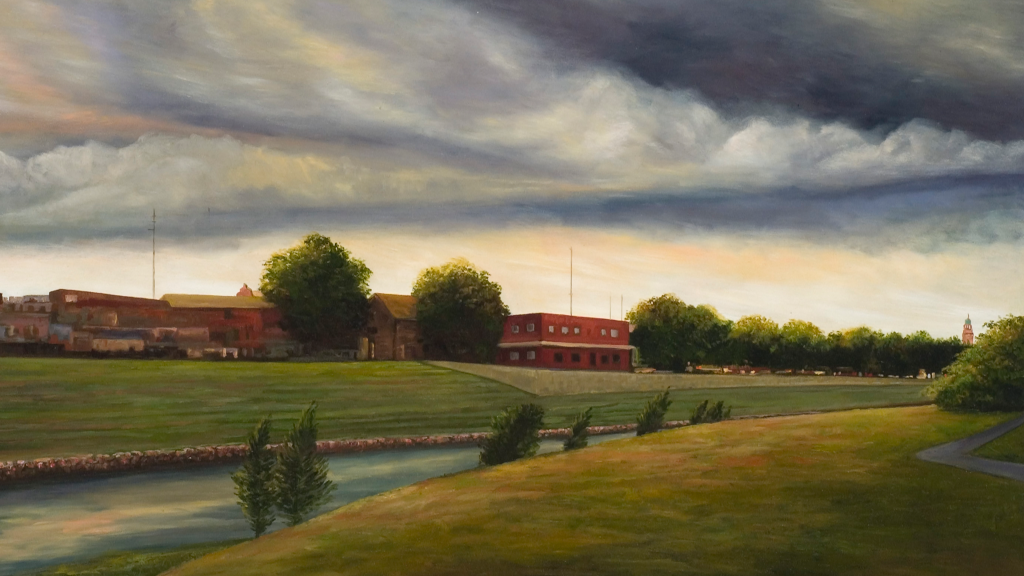
Perhaps Leo Robba’s (1962-) view of the Hunter River at Maitland was a presage of his future research. Since painting this view in 2006 for the exhibition View of Maitland from the riverbank (with apologies to Jan Vermeer and View of Delft) at Maitland Regional Art Gallery (MRAG), Robba has gone on to complete a […]
Read More…











